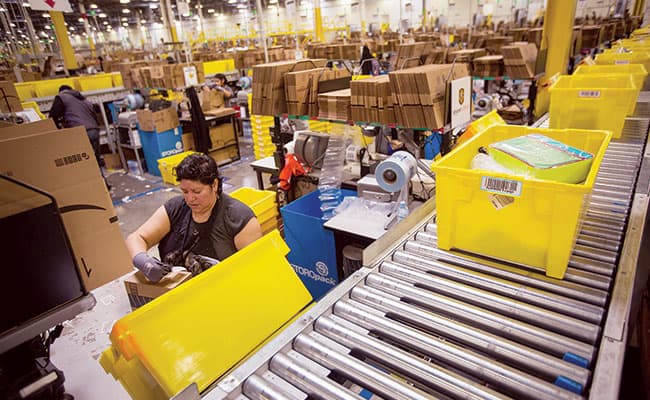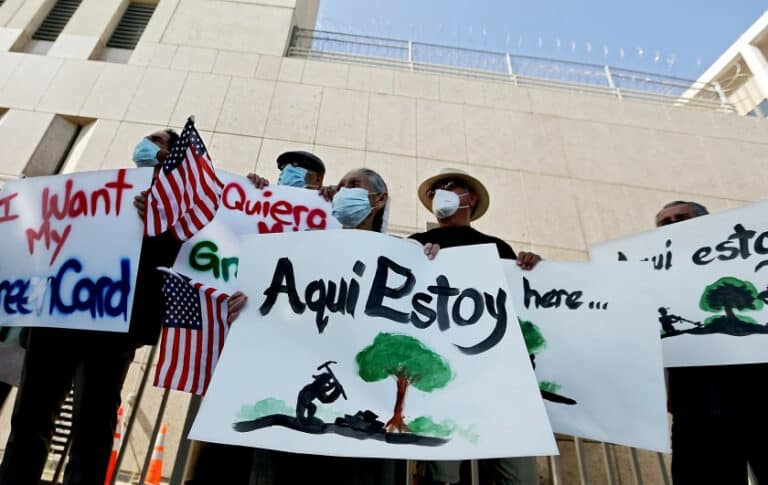
Nicholas Anway is a student at Harvard Law School.
In today’s news and commentary: a labor reporter analyzes the factors driving the recent spike in union organizing; workers increasingly pick up extra jobs to pay for gas and food; conflicting data may show early signs of a weakening labor market; restaurant industry employment lags behind pre-pandemic levels; and lagging enforcement of transit worker protections risks hampering hiring across the industry.
In a recent newsletter, Noam Scheiber described several factors behind the recent spike in union organizing. (Scheiber covers workers and labor issues for the New York Times.) He pointed to his recent profile of Jaz Brisack, a Rhodes scholar and barista who helped jump-start union organizing at Starbucks stores, as an example of “salting,” a term for people taking jobs with the purpose of organizing workers. According to Scheiber, several salts have helped organize Starbucks and Amazon facilities this year. Although salts have tended to be college-educated workers, Scheiber explains that diverse coalitions of workers, many of whom have working class backgrounds, have driven recent union organizing successes. Scheiber also argued that “historically, unionization tends to happen in spurts,” pointing to recent data showing that “[a]pplications for union elections this year are on pace to approach their highest level in a decade.” For an example of how union organizing is spreading on the ground, check out Lauren Rosenblatt’s Seattle Times article covering the early stages of a unionization campaign at a Washington state Amazon warehouse.
With prices rising faster than wages, many workers are picking up extra jobs just to pay for gas and food, the Washington Post reported yesterday. “Gas is just through the roof. Unless it’s payday, I put in all the money I have at the time, sometimes borrowing money from family and friends,” one Amazon warehouse worker told the Post. After realizing that he was not making enough money at Amazon to pay for gas at $15,75 an hour, the worker was forced to seek a second job, working two extra days a week as a janitor for $10 per hour. Although wages have increased across labor markets, they have not kept pace with inflation, which hit a 40-year high in June. “While people taking on multiple jobs is typically a sign of a healthy job market where workers have more job opportunities available, it is also a sign of increasing financial strain on Americans’ pocketbooks,” the Post explained. Since April 2020, the percentage of employed people working multiple jobs in the U.S. has increased by 20%.
Conflicting employment data from two recent surveys is raising questions about the labor market’s overall strength, according to the Wall Street Journal. Both surveys are used by economists to calculate employment, unemployment, and other statistics in the Labor Department’s monthly jobs report. However, they are distinguished by a key methodological difference: one surveys employers, and the other surveys households. As the Journal reported, “[t]he survey of employers shows nonfarm payrolls growing by an average of 375,000 jobs a month over the past three months. The household survey shows the economy losing an average of 116,000 jobs a month during the same span.” Although the employer survey’s methodology is considered more reliable, some economists worry that the “deteriorating household data” may be an early sign of a labor market turning point.
Meanwhile, labor shortages persist in some sectors. CNBC reported that the restaurant industry is “still down 750,000 jobs—roughly 6.1% of its workforce—from pre-pandemic levels as of May, according to the National Restaurant Association.” And in full-service restaurants, staffing is down 11% from pre-pandemic levels. Employers report struggling to keep pace with rising wages in an industry that has historically been characterized by high turnover rates. According to the Bureau of Labor Statistics, accommodation and food service workers left their jobs at a rate of 5.7% in May.
Finally, according to a recent Politico article, lagging enforcement of protections for transportation workers could hamper hiring and system upgrades throughout the industry. The bipartisan infrastructure bill that Congress passed in November contained provisions aimed at improving transit workplace safety in response to pandemic-era spikes in violence against workers. However, these provisions have yet to be enforced by the Federal Transit Administration. “As bus drivers, subway operators, maintenance workers and others face a growing risk of attacks,” Politico wrote, “economists warn that the delay could hamstring recruitment and retention of transit workers, rendering the infrastructure bill’s $39 billion in new public transit funding less effective.”






Daily News & Commentary
Start your day with our roundup of the latest labor developments. See all
June 30
Antidiscrimination scholars question McDonnell Douglas, George Washington University Hospital bargained in bad faith, and NY regulators defend LPA dispensary law.
June 29
In today’s news and commentary, Trump v. CASA restricts nationwide injunctions, a preliminary injunction continues to stop DOL from shutting down Job Corps, and the minimum wage is set to rise in multiple cities and states. On Friday, the Supreme Court held in Trump v. CASA that universal injunctions “likely exceed the equitable authority that […]
June 27
Labor's role in Zohran Mamdani's victory; DHS funding amendment aims to expand guest worker programs; COSELL submission deadline rapidly approaching
June 26
A district judge issues a preliminary injunction blocking agencies from implementing Trump’s executive order eliminating collective bargaining for federal workers; workers organize for the reinstatement of two doctors who were put on administrative leave after union activity; and Lamont vetoes unemployment benefits for striking workers.
June 25
Some circuits show less deference to NLRB; 3d Cir. affirms return to broader concerted activity definition; changes to federal workforce excluded from One Big Beautiful Bill.
June 24
In today’s news and commentary, the DOL proposes new wage and hour rules, Ford warns of EV battery manufacturing trouble, and California reaches an agreement to delay an in-person work mandate for state employees. The Trump Administration’s Department of Labor has advanced a series of proposals to update federal wage and hour rules. First, the […]